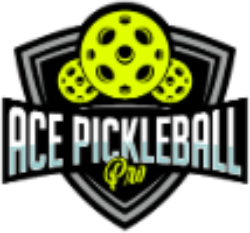(Before They Wreck Your Game)
The Future of Injury Prevention in Pickleball: Building a Resilient Body for a Lifelong Game
“Pickleball isn’t just a sport. It’s a human performance test disguised as a good time.”
— Russell M. Wright, Adaptive Biomechanics Researcher
As pickleball surges in popularity across generations, so do the injuries — from pickleball elbow to Achilles ruptures. But what if we reframed injury prevention not just as stretching and hydrating, but as systems resilience?
This article introduces the Injury Resilience Stack, grounded in sports science, predictive technologies, and neuro-optimization. It doesn’t just reduce injury risk — it builds a smarter, longer-lasting pickleball body.
The Injury Resilience Stack: A Forward-Looking Model
To push beyond traditional safety guides, we created a layered system inspired by military readiness and NASA astronaut training. Each layer works together to build long-term durability — from joint health to mental clarity.
| Layer | Role |
|---|---|
| Foundational Health | Nutrition, hydration, sleep — and choosing pickleball gear that supports recovery |
| Mechanical Load Balance | Core strength, footwear, joint alignment |
| Neuromuscular Intelligence | Balance, proprioception, fatigue perception |
| Cognitive Clarity | Attention control, mental reset tactics |
| Adaptive Intelligence | AI-based feedback, bio-sensing recovery timing |
Beyond Basics: Next-Gen Injury Insights & Technologies
1. Cognitive Fatigue ≠ Physical Fatigue
Reaction time and foot placement errors often stem from mental fatigue, not just muscle soreness. Studies show that mental fatigue can reduce coordination and endurance even without any muscle tiredness (Marcora et al., 2009).
🔹 Solution: Integrate cognitive resets every 30 minutes: 2 minutes of closed-eye breathing, hydration, and visualization.
🔹 Tool: Use wearables like WHOOP or Garmin HRV monitors to detect neural fatigue before it turns into physical mistakes.
2. Predictive Wearables + AI Feedback Loops
AI-integrated wearables are entering pickleball, following their success in elite sports. The MotusONE sleeve — originally developed for Major League Baseball pitchers — detects micro-movements and biomechanical strain that can predict injuries weeks before they happen.
🔹 What’s Coming:
- Real-time alerts when movement mechanics go off-balance
- AI-driven recommendations for rest and recovery
- Game intensity tuning based on your personal data
3. 🎾 Biomechanics Comparison: Tennis vs. Pickleball
Tennis players transitioning into pickleball often bring big movements to a small court — which can lead to injury without adjustment.
| Movement Pattern | Tennis | Pickleball |
|---|---|---|
| Footwork | Sprint acceleration | Lateral bursts |
| Upper Limb Load | Serve-dominant | Dinks & drives combo |
| Common Injuries | Rotator cuff, wrist | Achilles, elbow, knee |
🔹 Solution: Train for micro-movements using pickleball footwork drills that focus on balance and directional control.
The Injury Entropy Curve — A Predictive Model
Injuries rarely happen out of the blue. They build like a slow leak before a blowout. Here’s how:
Injury Entropy Flow:
- Stable Play
- ↓ Micro-fatigue builds
- ↓ Focus and reaction time begin to slip
- ↓ Form starts to deteriorate
- ↓ Reactive footwork and awkward shots
- ↓ Minor strain develops
- ↓ Inflammation accumulates
- 💥 Acute injury or breakdown
The key is to intervene early — around step 3 or 4 — before things snowball.
🔹 Start here: Performance drills for intermediates help you stay sharp when fatigue sets in.
Personalized Injury Defense: Train by Biological Resilience
Forget age. What matters is how well your body bounces back. Use these metrics to guide training:
| Metric | Tool | Target Range |
|---|---|---|
| HRV | WHOOP, Apple Watch | 80+ ms |
| Sleep Efficiency | Oura Ring | 85–95% |
| Mobility Score | FMS or Y-Balance | ≥17 |
| Joint Pain | Self-tracked | ≤2 after play |
When two or more start slipping, scale intensity before volume.
🔹 Unsure if your paddle is helping or hurting your joints? Start with this paddle weight guide.
Neuro-Flexibility: The Missing Piece
Mental rigidity — overthinking, frustration, poor split-second decisions — is often the final warning before physical injury. A 2023 study found that players who practiced mental simulation before play experienced 22% fewer injuries.
This aligns with earlier research showing that mental fatigue alone can impair physical performance, even in the absence of muscle fatigue.
🔹 Try This Drill: Close your eyes pre-game. Simulate the first three points — where your feet land, paddle angle, your balance on recovery. This primes motor coordination networks in your brain.
Future-Proofing Pickleball Health: What’s Next?
📈 What’s coming soon to injury prevention:
- AI swing coaches and biomechanics analyzers
- Machine learning models predicting injury windows
- 3D-printed orthotics based on gait
- Paddles that adapt torque zones based on play style
Closing Thought: Train Smart, Play Forever
Pickleball’s growth isn’t slowing down — and neither should you. But fun only lasts if your body stays healthy.
Today’s casual players are tomorrow’s high-performers.
Start building your injury resilience stack now — before soreness becomes strain, and strain becomes a season off the court.
Looking to start smart? Try pickleball lessons for beginners, or explore the latest in injury-friendly paddles.
And for more future-ready tips, tech, and tools — keep it locked to Ace Pickleball Pro.
